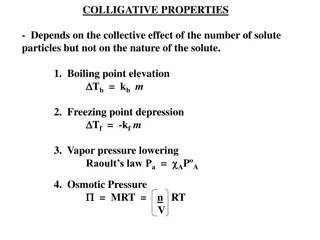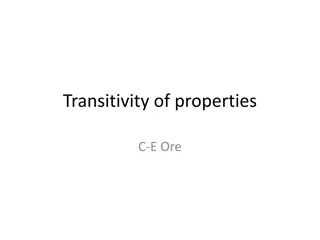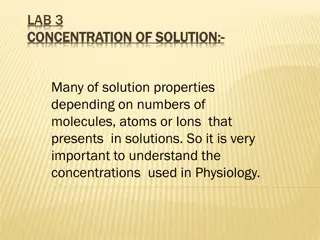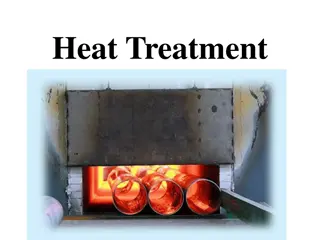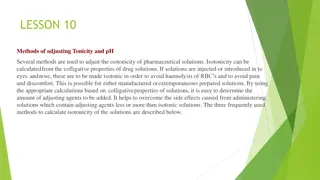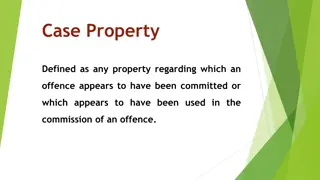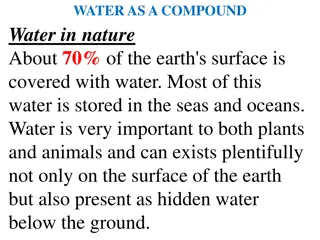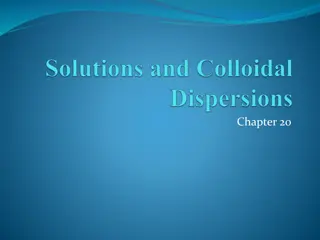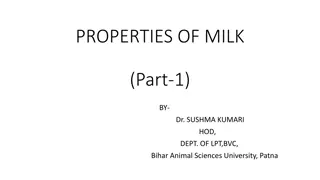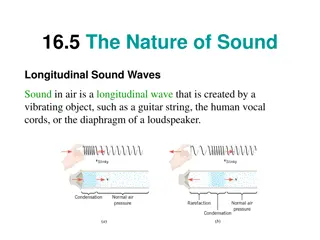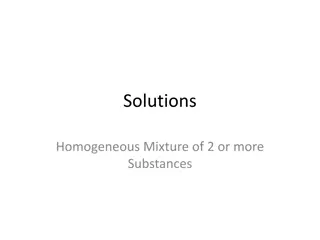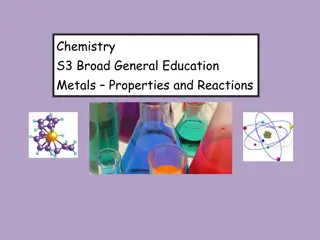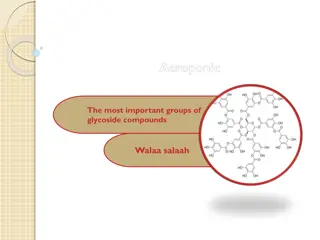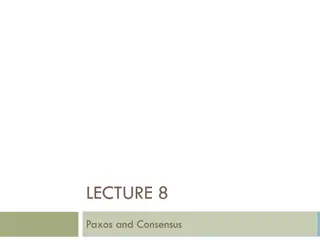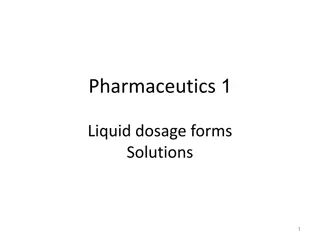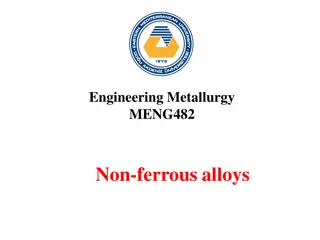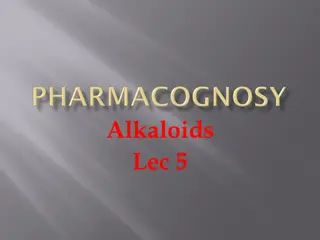Understanding Properties of Solutions: A Comprehensive Overview
Solutions are homogeneous mixtures of pure substances where the solute is uniformly dispersed in the solvent. This chapter delves into the formation of solutions, types of solutions (saturated, unsaturated, supersaturated), Henry's Law, the influence of temperature on solubility, and ways of expressing solution concentrations like mass percentage. The content explores the intricate details of intermolecular forces and equilibrium in solution formation.
Download Presentation

Please find below an Image/Link to download the presentation.
The content on the website is provided AS IS for your information and personal use only. It may not be sold, licensed, or shared on other websites without obtaining consent from the author. Download presentation by click this link. If you encounter any issues during the download, it is possible that the publisher has removed the file from their server.
E N D
Presentation Transcript
Chapter 12 Properties of Solutions
Solutions Solutions are homogeneous mixtures of two or more pure substances. In a solution, the solute is dispersed uniformly throughout the solvent.
Solutions The IMFs between solute and solvent particles must be strong enough to compete with those between solute particles and solvent particles.
How Does a Solution Form? As a solution forms, the solvent pulls solute particles apart and surrounds, or solvates, them.
Types of Solutions Saturated Solvent holds as much solute as is possible at that temperature. Dissolved solute is in dynamic equilibrium with solid solute particles.
Types of Solutions Unsaturated Less than the maximum amount of solute for that temperature is dissolved
Types of Solutions Supersaturated Solvent holds more solute than is normally possible at that temperature.
Henrys Law Sg= kPg Sg solubility of the gas k Henry s law constant for that gas in that solvent Pg partial pressure of the gas above the liquid.
Temperature Generally, the solubility of solid solutes in liquid solvents increases with increasing temperature.
Temperature The opposite is true of gases: Carbonated soft drinks are more bubbly if stored in the refrigerator. Warm lakes have less O2 dissolved in them than cool lakes.
Ways of Expressing Ways of Expressing Concentrations of Concentrations of Solutions Solutions
Mass Percentage Mass % of A =mass of A in solution total mass of solution 100
Parts per Million (ppm) mass of A in solution total mass of solution 106 ppm = Parts per Billion (ppb) mass of A in solution total mass of solution 109 ppb =
Mole Fraction (X) moles of A XA = total moles in solution
Molarity (M) mol of solute L of solution M = Because volume is temperature dependent, molarity can change with temperature.
Molality (m) mol of solute kg of solvent m = Because both moles and mass do not change with temperature, molality (unlike molarity) is not temperature dependent.
Colligative Properties Colligative Properties Changes in colligative properties depend only on the number of solute particles present, not on the identity of the solute particles. Among colligative properties are: Vapor pressure lowering Boiling point elevation Freezing point depression Osmotic pressure
Vapor Pressure Because of solute-solvent intermolecular attraction, higher concentrations of solutes make it harder for solvent to escape to the vapor phase. Thus, the vapor pressure of a solution is lower than that of the pure solvent.
Raoults Law PA = XAP A XA is the mole fraction of the SOLVENT P A is the normal vapor pressure of the solvent at that temperature
Example Example Calculate the vapor pressure of a solution containing 22.5 g of lactose (C12H22O11) and 200.0 g of water at 60 C. Assume that the vapor pressure of pure water at 60 C is 149 torr. What if we tripled the amount of solute? So adding more solute will inc/dec VP??
Boiling Point Elevation and Freezing Point Depression Solute-solvent interactions also cause solutions to have higher boiling points and lower freezing points than the pure solvent.
Boiling Point Elevation Tb = i Kb m i the dissociation factor think electrolytic behavior Kb molal boiling point elevation constant, a property of the solvent m molality of solution Tb is added to the normal boiling point of the solvent.
Freezing Point Depression The change in freezing point can be found similarly: Tf = i Kf m Here Kf is the molal freezing point depression constant of the solvent. Tf is subtracted from the normal freezing point of the solvent.
Osmosis Some substances form semipermeable membranes, allowing some smaller particles to pass through, but blocking other larger particles. In biological systems, most semipermeable membranes allow water to pass through, but solutes are not free to do so. In osmosis, there is net movement of solvent from the area of higher solvent concentration to the are of lower solvent concentration
Osmotic Pressure The pressure required to stop osmosis, known as osmotic pressure, , is n V = i()RT = iMRT M is the molarity R is the ideal gas constant (0.08206 L-atm/mol-K) T is temp in Kelvin




